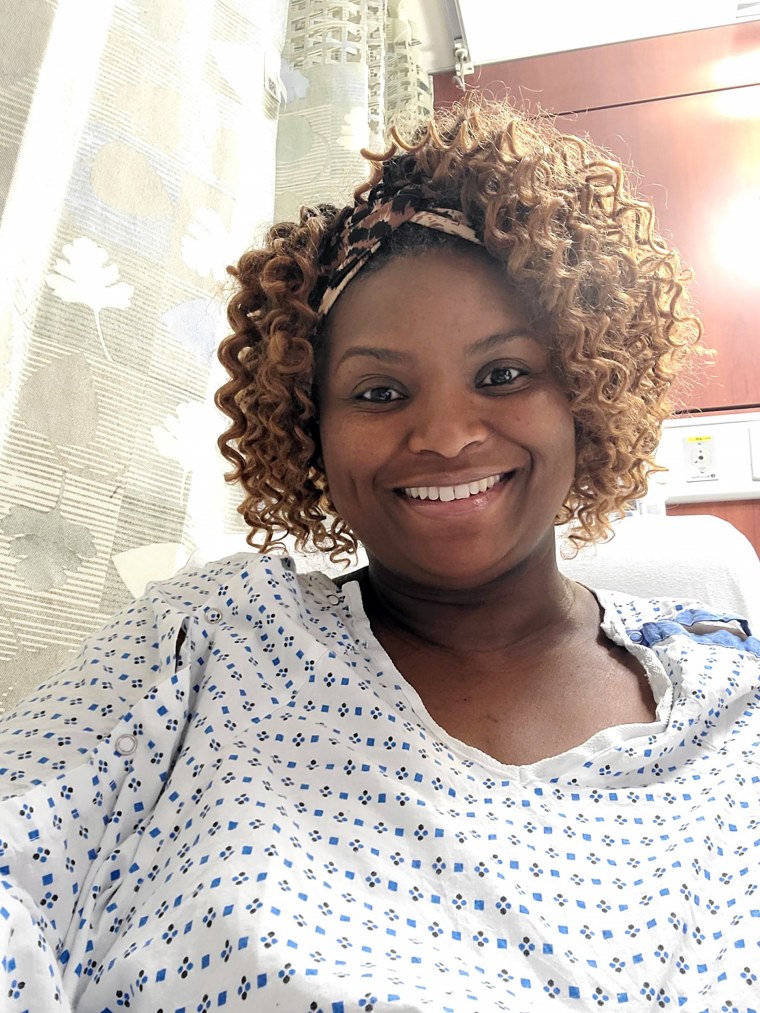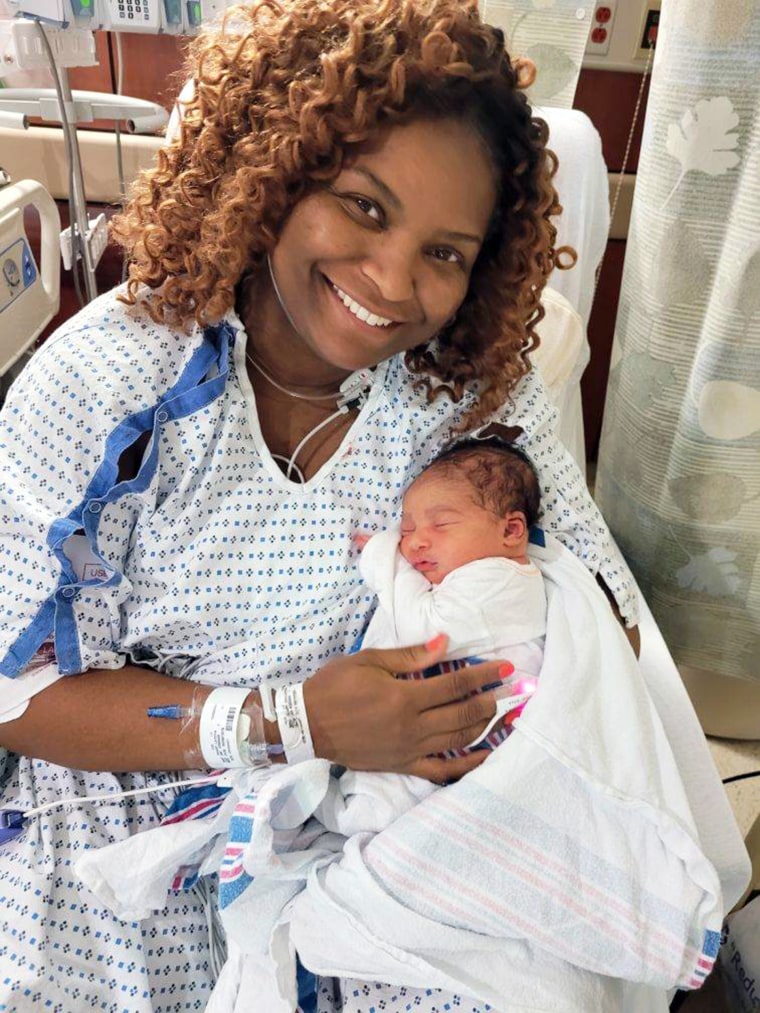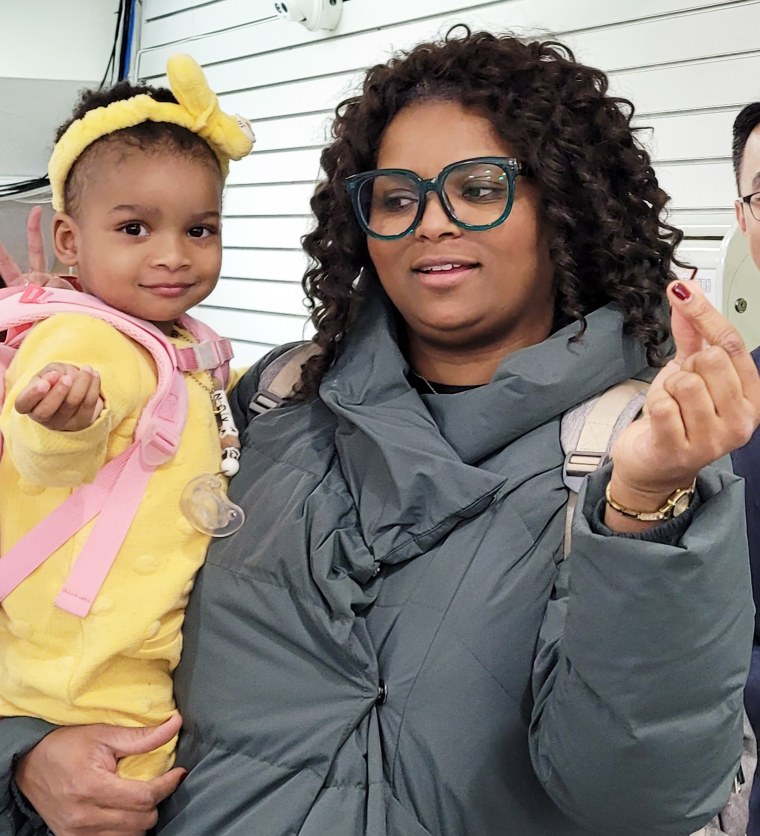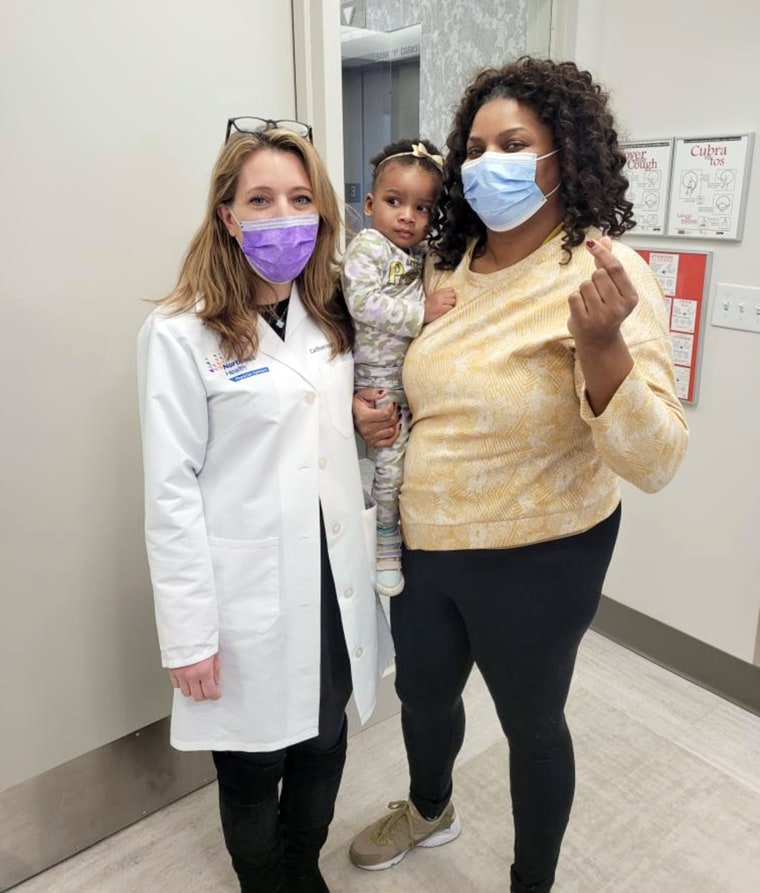La’Toya Sharp’s second pregnancy didn’t go as smoothly as she hoped. The then 42-year-old developed gestational diabetes and, after 17 hours of labor, had to have an emergency cesarian-section.
As she recovered in the hospital, she began struggling to breathe and her blood pressure spiked. When she laid down, she felt as if she were “drowning.” Sharp learned she had postpartum preeclampsia.
“I have a medical background and I was thinking in my mind, ‘Pre means before.’ This is something that happens before pregnancy because I had a normal blood pressure all throughout pregnancy,’” Sharp, 44, of North Carolina, tells TODAY.com. “They said this can happen 48 hours after delivery or even up to six weeks after and I was shocked.”
Pregnancy and postpartum preeclampsia
In 2016, Sharp learned she was pregnant. But it was ectopic and one of her fallopian tubes ruptured. She had surgery to remove the tube and then later she had a procedure to shrink uterine fibroids. The loss of her tube and surgery on her uterus made it difficult for her to become pregnant. When she did become pregnant, everyone felt surprised, but Sharp also worried.

“Basically, everyone was like, ‘This is a miracle,” she says. “I went into this pregnancy very concerned.” Sharp was at “advanced maternal age” and developed gestational diabetes and needed to take insulin. Doctors wanted to induce her delivery because gestational diabetes causes babies to grow faster and they still wanted the baby to pass through her birth canal. Labor lasted a long time.
“After 17 hours of labor, they were like ‘The baby’s not coming,’” Sharp says. “We had to do a C-section.”
When Sharp saw her baby girl, Nova, she says she was surprised. She convinced herself that she was having a boy, but she was happy Nova was healthy. Doctors soon learned why Sharp couldn’t deliver the baby vaginally. A large fibroid blocked Nova’s path. Still, the two seemed to be doing well. But two days later, Sharp’s blood pressure increased.
“I was having shortness of breath,” she says. “I was thinking to myself, ‘Why is my pulse ox low? And why am I short of breath?’”
Her doctor, Dr. Lisa Johnson of Northwell Lenox Hill Hospital, told her she needed to stay in the hospital because Sharp had preeclampsia. She didn’t realize it could occur after birth and she felt worried by her symptoms.
“I have a background as a cardiothoracic ICU nurse,” she says. “I knew that when you laid down you should not feel as if you are choking. I started having kind of like a frothy sputum and I knew something is wrong.”
Johnson ordered an X-ray to understand why Sharp’s oxygen levels plummeted and why she felt as if she were drowning while resting.
“My lungs were full of fluid,” she said. “They were like, ‘We have to get you on a diuretic,’ … I actually went into pulmonary edema.”

This meant that Sharp couldn’t visit her baby in the nursery to breastfeed her. But she still wanted her daughter to have her colostrum and breast milk and pumped while she was receiving treatment. Nurses brought the baby to the floor where Sharp was receiving treatment so she could see her and try to feed the baby.
Doctors ended up removing about eight liters of fluid from Sharp’s lungs.
“I was really drowning,” she says. “It got my blood pressure under control.”

Postpartum preeclampsia
Preeclampsia occurs in about 3 to 7 percent of pregnancies, according to the National Library of Medicine. In some cases, it occurs after the baby is delivered, but it’s considered rarer.
“We don’t really understand preeclampsia in general,” Dr. Catherine Weinberg, director of high-risk cardiovascular obstetrics at New York City's Lenox Hill Hospital, who treated Sharp, tells TODAY.com. “We know it can happen anywhere after 20 weeks of pregnancy to up to about six weeks or so postpartum.”
Signs of preeclampsia include:
- High blood pressure
- Swollen hands or faces
- New headaches
- Protein in urine
- Blurry vision
- Shortness of breath
- Weight gain from fluid retention
- Abdominal Pain
These symptoms remain the same for postpartum preeclampsia though new parents often do not receive the same close monitoring as they do prior to birth. Postpartum preeclampsia most often develops within a 48 hour period after birth so many people are still at the hospital being monitored.
People at greater risk of developing preeclampsia include:
- African American women
- Those with a family history
- People with chronic hypertension
- Those who develop gestational hypertension
- People with obesity
- People who have lupus or diabetes
- People who have undergone IVF
- People older than 35
Doctors use some of the same medications for people with preeclampsia both before and after delivery.
“We use a magnesium drip,” Weinberg says. “We also address their blood pressure.”
Preeclampsia is a serious medical condition the requires treatment. Left untreated people can develop seizures and even die.
“Women can die from untreated preeclampsia,” Weinberg says. “We don’t want it to go untreated.”
She notes that experts know that people who have preeclampsia are at greater risk of heart conditions. They are more likely to develop heart diseases, such as high blood pressure, coronary artery disease, heart failure, atrial fibrillation or stroke.

'Caring for yourself is caring for the baby'
After staying two weeks in the hospital, Sharp went home. She still struggled to breastfeed because Nova had problems latching. What’s more, Sharp developed postpartum depression.
“It was rough,” she says. “I ended up enrolling in therapy.”
“Some days I didn’t make it to the shower,” she says. “It was a struggle — period. I felt like throwing up I was so exhausted. “
After about two months, Sharp began feeling better and “got my groove.” Nova is now 19 months old and she’s smart and independent.
“I’m amazed,” she says. “I went through so much adversity. The results are something beyond what I could have imagined.”
She says she feels grateful she spoke up about her symptoms and her health care team treated her quickly.
“You have to take every symptom seriously and not dismiss it,” Sharp says. “We just think, ‘Oh OK we can dismiss it. I just got to care for my baby.’ But now caring for yourself is caring for the baby.”